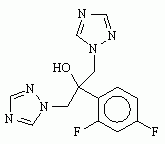WASHINGTON -- New data from two studies suggest that there is hope for women with complicated vulvovaginal candidiasis, Dr. Jack D. Sobel said at an update on sexually transmitted diseases sponsored by OB.GYN. NEWS and Boston University.
Maintenance prophylaxis with fluconazole appears to benefit women who typically relapse following what appears to be successful azole therapy. And women whose symptoms are caused by the nonalbicans strain Candida glabrata will probably respond to vaginal boric acid and/or flucytosine, said Dr. Sobel, professor and chief of the division of infectious diseases at Wayne State University, Detroit.
In the United States, 90% of vulvovaginal candidiasis cases in premenopausal women are uncomplicated, defined as mild to moderate in severity, with pseudohyphae, and occur infrequently or sporadically in women with normal immune systems. Nearly all of these cases will respond to one dose of fluconazole or single-dose azole therapy, Dr. Sobel said.
Complicated disease, on the other hand, may be moderate to severe and recurrent (at least four episodes a year). It may involve only budding yeast or it may occur in women with adverse risk factors such as uncontrolled diabetes, immunosuppression, and possibly pregnancy. In these women, prolonged treatment-lasting 7-14 days--is often required.
In some women, however, symptoms will return as soon as 1 month after what appears to be a complete mycologic cure. One theory is that these women are colonized with unique "adaptive strains" of Candida. Although susceptible to fluconazole, these strains remain alive--and detectable by polymerase chain reaction--despite negative cultures. "They are not new infections," Dr. Sobel noted.
Now even these women can potentially be cured. In a randomized, double-blind, multicenter study, 284 women with recurrent vaginal candidiasis infections first underwent an open-label induction period in which all were given a total of three doses of fluconazole at 72-hour intervals with the aim of achieving clinical remission. At 14 days, 95% were culture negative.
During the subsequent maintenance phase, the women took 150 mg fluconazole or placebo once a week for the next 6 months and were evaluated monthly. After that there was another 6-month period of observation during which patients were seen every 3 months.
At the end of the 6-month maintenance phase, 90% of 142 fluconazole patients remained in clinical remission, compared with just 34% of 142 who took placebo. Only 18% were culture positive at 6 months, compared with 72% of the placebo group. "It's an extraordinary difference, Dr. Sobel remarked.
After the next 6 months off the drug, 38% of the fluconazole group and 21% of the placebo group remained clinically cured. Mycologic remission remained at 12 months in 39% of the fluconazole patients and 27% of the placebo patients.
The median time for 50% of fluconazole-treated patients to have a clinical recurrence was 10.2 months, compared with 4.0 months with placebo. For mycologic recurrence, those times were 8.8 and 2.0 months, respectively Throughout the study there was no emergence of resistance or C. glabrata in vaginal isolates.
Another problematic version of recurrent vulvovaginal candidiasis--colonization with the C. glabrata species--also may be amenable to intervention, he said. C. glabrata, the most common of the nonalbicans strains, is 100 times less susceptible to most azoles than is C. albicans.
In a study of 73 women with C. glabrata vaginitis who failed azole therapy, vaginal application of boric acid (600 mg/day) produced clinical and mycologic cures in 67% treated for either 14 or 21 days.
COPYRIGHT 2003 International Medical News Group
COPYRIGHT 2003 Gale Group



